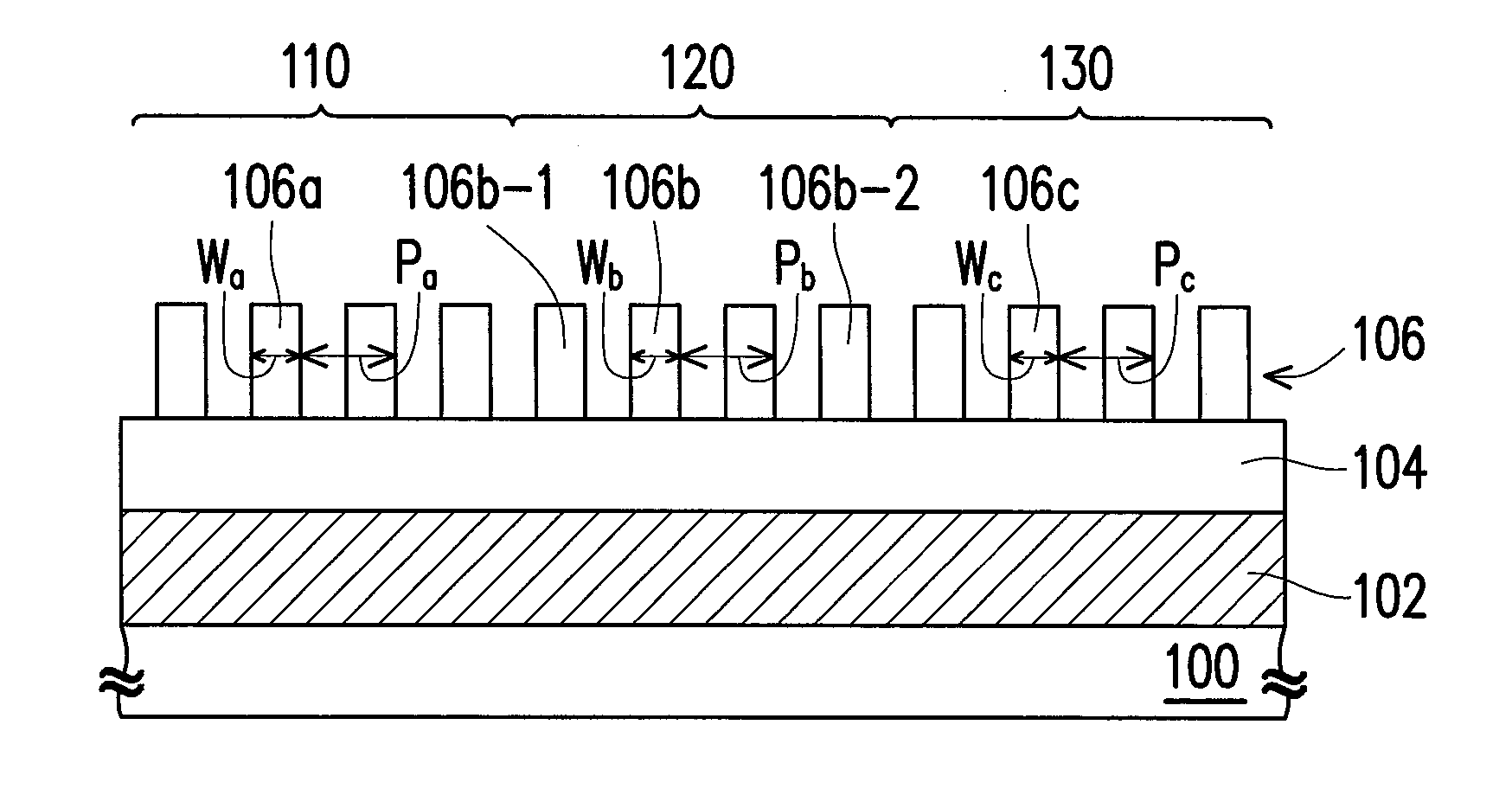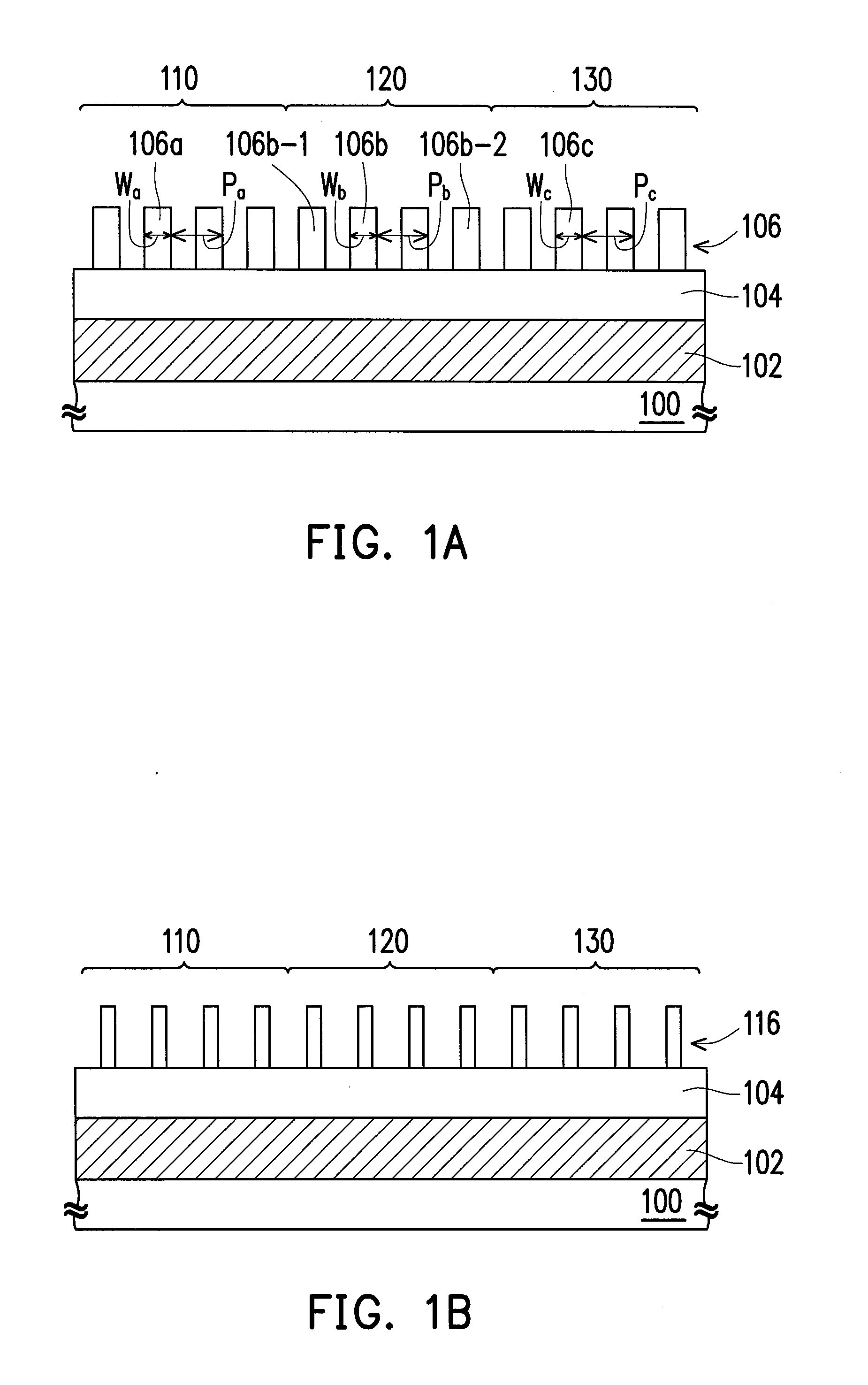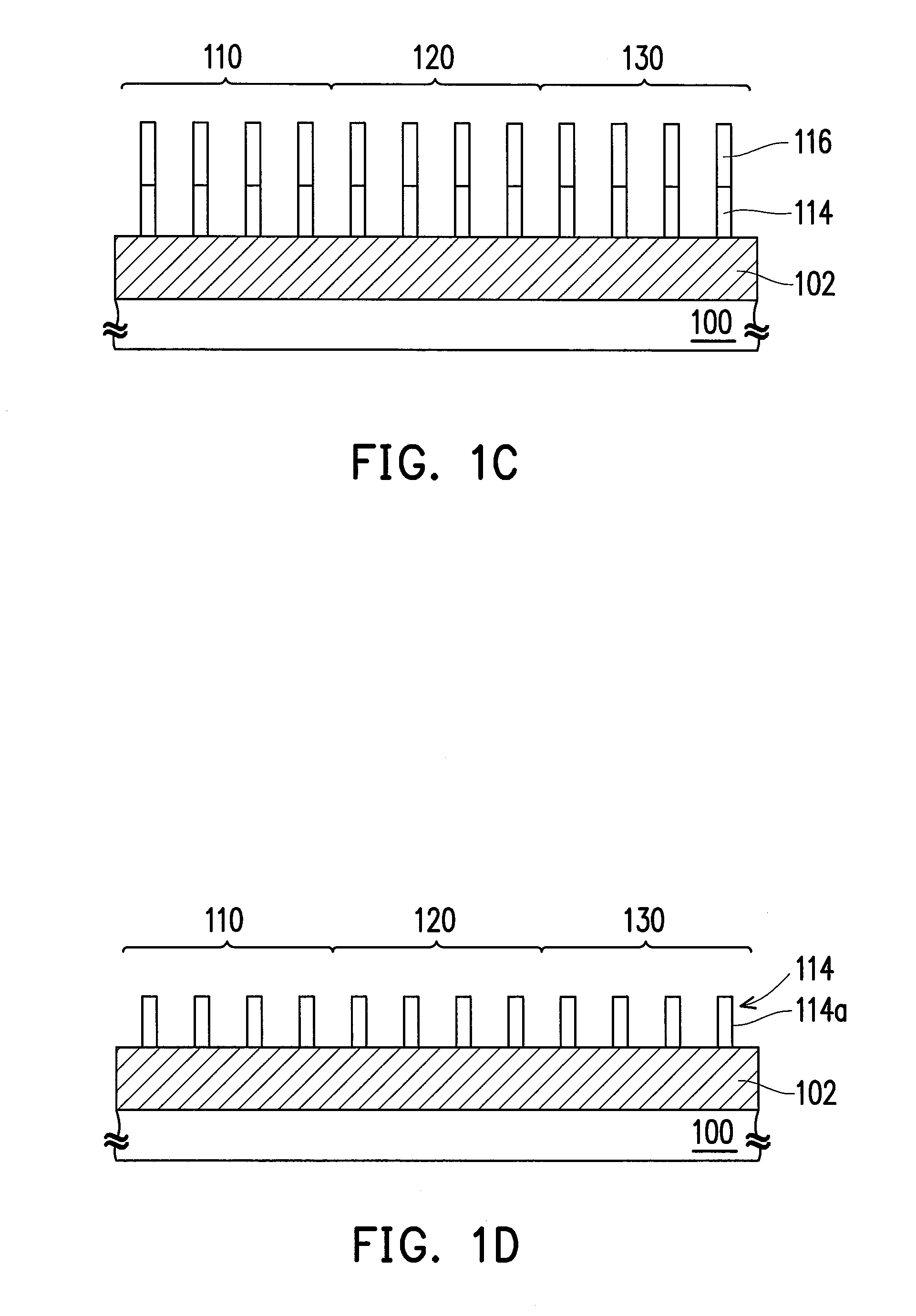Patterning method and method of forming memory device
a memory device and patterning technology, applied in the manufacturing of semiconductor/solid-state devices, basic electric elements, electric devices, etc., can solve the problem of inability to accurately control to the target value, and achieve the effect of improving cdu
- Summary
- Abstract
- Description
- Claims
- Application Information
AI Technical Summary
Benefits of technology
Problems solved by technology
Method used
Image
Examples
Embodiment Construction
[0044]FIG. 1A to FIG. 1M are cross-sectional diagrams showing a patterning method according to an embodiment of the invention.
[0045]Referring to FIG. 1A, a substrate 100 is provided. The substrate 100 has a first area 110, a second area 120 and a third area 130. The second area 120 is located between the first area 110 and the third area 130. The substrate 100 is, for example, a silicon substrate or a suitable semiconductor substrate. In an embodiment, both the first area 110 and the third area 130 can be cell areas of a memory, while the second area 120 can be a peripheral area or an open area of the memory. Next, a target layer 102 and a sacrificial layer 104 are sequentially formed on the substrate 100. The target layer 102 is, for example, a single layer or a stacked layer. In an embodiment, when the target layer 102 is a single layer, the material thereof can be doped polysilicon. In another embodiment, when the target layer 102 is a stacked layer including a dielectric layer a...
PUM
 Login to View More
Login to View More Abstract
Description
Claims
Application Information
 Login to View More
Login to View More - R&D
- Intellectual Property
- Life Sciences
- Materials
- Tech Scout
- Unparalleled Data Quality
- Higher Quality Content
- 60% Fewer Hallucinations
Browse by: Latest US Patents, China's latest patents, Technical Efficacy Thesaurus, Application Domain, Technology Topic, Popular Technical Reports.
© 2025 PatSnap. All rights reserved.Legal|Privacy policy|Modern Slavery Act Transparency Statement|Sitemap|About US| Contact US: help@patsnap.com



